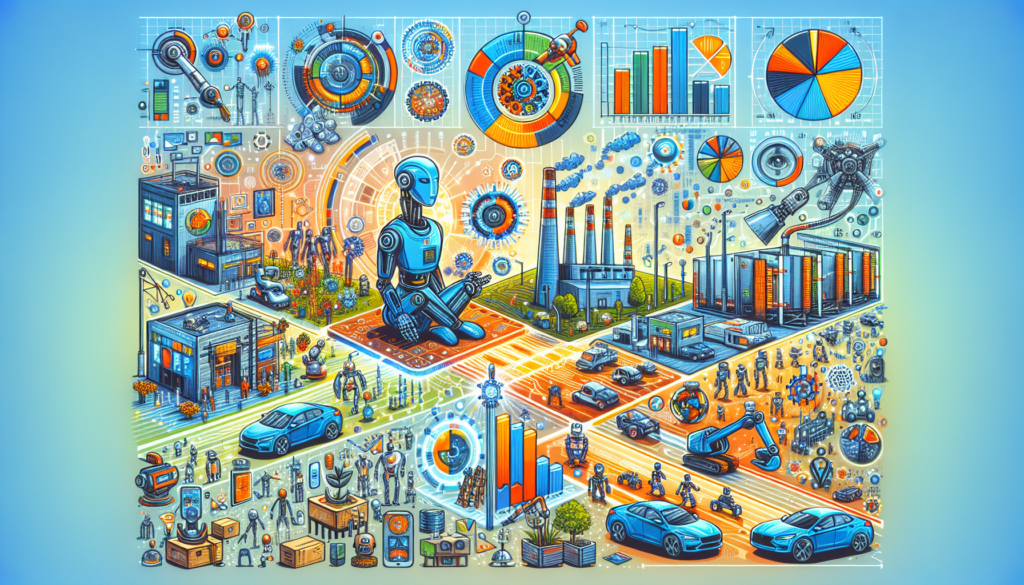At the intersection of advanced technological innovation and industrial pragmatism, robotics and automation stand out as two of the most dynamic and revolutionary engineering fields of the 21st century. Each year, expectations soar regarding how these disciplines will modify our environment. By 2023, these trends not only reflect incremental evolutions but also conceptual leaps and new paradigms, which are the result of in-depth research and the development of sophisticated practical applications.
Artificial Intelligence and Machine Learning Integrated into Robotics
Machines are not only learning to perform tasks but to reason and make autonomous decisions. The integration of complex Artificial Intelligence (AI) algorithms and Machine Learning (ML) techniques with robotic systems is leading to automata capable of adapting to their environment and improving their performance with experience. The deployment of self-learning robots is becoming a crucial trend, with recent research focusing on the generalization of acquired skills and their transfer across different robotic platforms.
Cognitive and Contextualization Applications
A notable aspect is the improvement in the capacity of robotic systems to interpret their context and act more ‘intelligently.’ This is evident in the adoption of advanced sensors and sensor fusion, which allow a richer interpretation of the environment, enabling robots to execute more complex and varied tasks. For instance, the use of computer vision combined with ML algorithms is allowing manufacturing robots to select and manipulate unstructured objects with astonishing precision.
Real-Time Reinforcement Learning
Another area of special attention is real-time reinforcement learning, where robots adjust their actions based on feedback from their successes and failures. This type of learning, which resembles the natural human learning process, is transforming the way robotic systems evolve and respond to changing conditions in their operating environment.
Collaborative Robotics and Autonomous Systems
The cooperation between robots and humans is reaching new heights, with the so-called cobots (collaborative robots) designed to work hand in hand with human workers. The ability to collaborate safely and effectively with humans requires advances in contextual intelligence and predictive capabilities as well as sensing and actuation systems that can ensure safety in the shared environment.
Interoperability and Industrial Standards
Driven by the concept of Industry 4.0, the field of robotics is moving towards greater interoperability within production systems. This includes the adoption of universal communication protocols and the creation of robots that can integrate seamlessly with existing manufacturing networks and other machines, allowing for a much more fluid and efficient ecosystem.
Autonomous Mobile Robotics
Autonomous Guided Vehicles (AGVs) and intelligent transport systems are already well-established examples, but boundaries are expanding. The autonomous navigation and logistics are being significantly enhanced thanks to the development of more precise mapping and localization systems, which allow these systems to operate in more complex environments, from warehouses to outdoor urban settings.
Drones and Their Expanded Application
Drones, already an increasingly common tool in aerial photography and inspection, are seeing new applications such as autonomous package delivery and environmental sampling tasks. In the latter case, for example, the combination of autonomous drones with specialized sensors is providing new ways of monitoring air quality and other environmental parameters in real-time.
Personal and Service Robotics
As robots become more accessible and adaptable, their use in domestic and service environments is expanding. In addition to the well-known cleaning robots, personal assistants with more advanced capabilities are being developed, such as elder care or assistance in daily tasks for people with disabilities.
Health and Well-being
The field of assistive robotics is seeing exponential growth, driven by the aging population in many parts of the world. This includes from exoskeletons that assist people with reduced mobility to personalized robotic rehabilitation systems.
Modular and Assembled Robotics
The concept of modular robots that can be reconfigured for different tasks is gaining strength. This flexibility allows for the rapid adaptation of productive capacity and experimentation with configurations that can overcome the limitations of traditional robotic systems.
Additive Manufacturing and Robotics
Additive manufacturing is making possible the rapid and custom production of robotic parts, which in turn is accelerating innovation in robot design. The ability to produce complex and customized parts through 3D printing is becoming an integral part of robotic development.
Ethical and Security Challenges
As robotics and automation integrate more into everyday life, significant ethical and security issues arise. The responsible development of robotic technologies requires careful consideration of potential impacts such as privacy, cybersecurity, and changes in the labor market.
Regulatory Framework
Establishing a robust regulatory framework is essential to ensure that the implementation of robots in our society is safe and ethically sustainable. This framework must be flexible enough to adapt to rapid innovations in the field, but strict enough to protect the interests of individuals and society as a whole.
Conclusions and Look to the Future
The robotics and automation horizon for 2023 and beyond is magnetically innovative and challenging. With the growing synergy between artificial intelligence, advanced sensing, and human-robot collaboration, we are witnessing the reconfiguration of industrial, social, and personal landscapes. Case studies, such as the deployment of robotic networks in logistics or the emergence of assistive robots in healthcare, demonstrate the pragmatic and transformative impact of these technologies.
As these trends materialize, it is imperative not only to celebrate technological advances but also to guide regulatory and ethical policies that accompany this revolution. The coming years will be critical in determining how robotics and automation responsibly shape the human-technological future.

